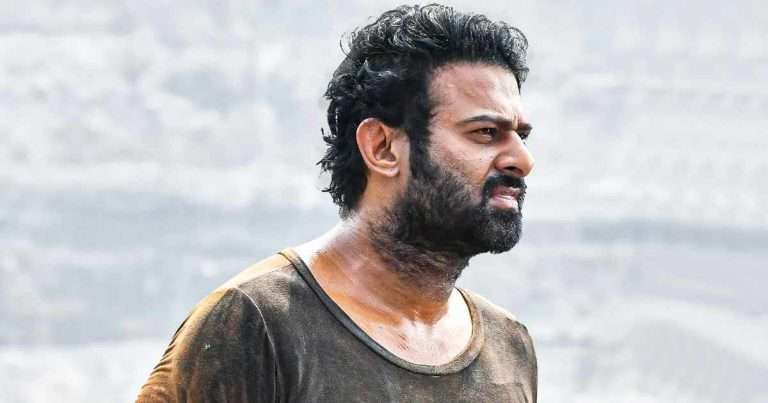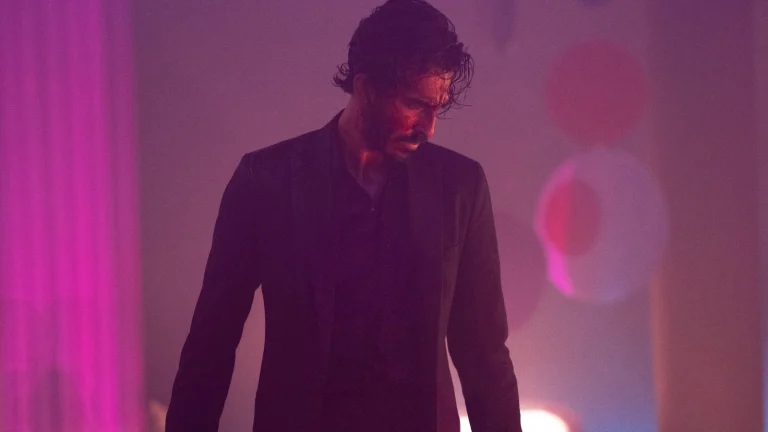The 10 Best Hrishikesh Mukherjee Movies: The honesty of purpose, a sincere commitment to cinema, and a passion for presenting his audience with wholesome, family entertainment – when these phrases had not turned to cliché – is what sums up the work of Hrishikesh Mukherjee, who turned 100 this year.
Hrishikesh Mukherjee gave Hindi cinema a new definition when he graduated from editing to direction without giving up his first love – editing. He defined Hindi mainstream cinema as wholesome family entertainment richly interwoven with a strong storyline, good music, solid, full-blooded characterizations, and a probing, dissecting look into human inter-relationships.
In essence, honesty has been the hallmark of his films which neither pretended to be of the arty-intellectual kind nor compromised to the demands of the box office. Yet, they grew in popularity at the box office, taking veterans by surprise. Hrishi-da belonged to an era where film people did not wear that imaginary halo of stardom around their heads that alienated them from the mainstream.
Hrishikesh Mukherjee began his career in 1945 when he learned editing on the job at New Theatres in Calcutta. “There was no FTII (Film and Television Institute of India) then, and we learned mostly through observing others at work or while working ourselves. Those who could have taught us did not. World War II brought a slump in film production, and those willing to teach could not.”
He edited films like Maa, Do Bigha Zamin, Parineeta, etc. His first independent work as an editor was for the Bengali film Tathapi. “I then came down to Bombay in 1951 to team up with Bimal Roy, who, too, had just migrated.” By then, he was bent on getting into direction seriously. His first effort at producing and directing his film was Musafir, composed of three short stories conceived by Mukherjee. At the same time, Ritwik Ghatak collaborated on the script.
He drew heavily from Bengali literature, which made his films “humane,” as Gulzar put it. Each movie bore a subtle social message, be it the neglect of the girl child in Anupama or the unscrupulous capitalist vs. the toiling, a starving worker in Namak Haram. “Your art is your attitude to life,” he’d admitted once. But he consistently rated the National Award-winner Satyakam as his best film, produced and acted in by Dharmendra, who also ranks it as his best.
We list here a short brief on the ten best films out of the total 41 in his long career, according to this author, arranged from the best down.
1. Satyakam (1969)
This was a very ambitious project touched upon by Hrishikesh Mukherjee, which turned out to be a big commercial flop. Due to its basic theory of fleshing out the character of Satyapriya Acharya (Dharmendra) as a staunch honest man who refuses to bend down to any action that even faintly smells of dishonesty and corruption. He was born into a family whose tradition is to speak the truth and live honestly. Every one of Satya Priya’s ancestors’ names begins with the word “Satya.”
But it is Mukherjee’s best film because he took courage in his hands to make a mainstream film that did not surrender to commercial demands made on directors directly or subtly. The hero is also like this. His family members and close ones, including his lover, who later becomes his wife (Sharmila Tagore), suffer terribly because he refuses to bend to demands made on him that faintly suggest corruption. In fact, he remains as adamant as ever. The film’s name is taken from the ancient Hindu saint Satyakama Jabala. This name belongs to a young boy of illegitimate birth who lived during the Vedic Era and took his mother’s name -not his father’s – ‘Satyakam Jabala.’ He went on to become a Rigvedic Sage of many Suktas.
This premise of the film was based on a Bengali novel of the same title, written by a renowned writer Narayan Sanyal which is set around 1946, just before India’s Independence. The story of Satya Priya starts in his college days when he is studying to become an engineer along with his close friend Naren (Sanjeev Kumar).
After their studies, Satya Priya and Naren settled in different cities and pursued their careers. They frequently communicate through letters. Naren is shocked and amazed every time he learns that Satya Priya gets fired or quits his job because he wouldn’t lie or bare the corruption in his office. Naren begins to understand Satya Priya’s self-esteem and “laws” about living an honest life.
A group of engineering students graduates a few months before Independence. Satyapriya and Naren, close friends, are among them. The principality of Bhawanigarh is run by a cruel, dissolute man, Vikram Singh, who knows his days of absolute power are numbered. Satyapriya Acharya finds employment in Bhawanigarh, then meets and marries Ranjana under peculiar circumstances.
It creates enormous issues in his family, particularly his grandfather, who raised him. The orthodoxy of the teacher clan of the Acharyas precludes the admission of Ranjana into the household as she has a shady past. Satyapriya, an epitome of integrity, refuses to utter any untruth. Consequently, he and his family face difficulties. The prime victim is his wife and child. It takes a death in the family to bring a reinterpretation of tradition and relationships.
The film touches the heart and soul of the viewer-through dialogues, emotions, guilt, and surprise in equal measure. Towards the end of the film, Ranjana’s (Sharmila Tagore) son,(Sarika)-tells out the same bitter truth fearlessly -and wins over the rather principled grandfather (Ashok Kumar). The songs and background music do not touch any chord within and without the film. Ashok Kumar’s styling with the long hair, long beard, and costume made to copy Rabindranath Tagore goes against the principle of honesty the film vouches for and the character. But it disappears later on.
Satyapriya’s honesty costs him his job, friendship, and everything demanded from ordinary life, but he does not budge from his stance. This is the only film in Hindi cinema to have tackled the value of honesty so honestly and brutally. This film marks Dharmendra’s best performance of his career, and Sanjeev Kumar also stands out. But commercially, the audience turned its back on the film.
2. Alaap (1977)
This writer considers this film among the ten best Amitabh Bachchan starrers in which the director-writer Hrishikesh Mukherjee took him entirely out of his ‘angry young man’ box. It was a challenge to his screen image – to perform as the son of another great actor Om Prakash and last, but never least, bringing to celluloid life one of the best father-son relationships in Hindi cinema second to none other than the other Bachchan father-son conflict film in Ramesh Sippy’s Shakti.
Another unique feature of the film is its casting of Om Prakash in a very serious, emotional, and touching role, far away from the comedy he was famous for and for which he had become a name to be reckoned with. Alaap is one of the most emotionally rich portraitures of the conflict between a wealthy advocate and domineering father, Triloki Prasad (Om Prakash), and his younger son Alok (Amitabh Bachchan), who is passionate about a dedicated career in Hindustani classical music.
His father wants him to join the family business. But Alok prefers to pull a tonga and turn to music as his commitment and livelihood over joining his father’s practice. He leaves his father’s abode and finds life extremely difficult, with only music as his means of survival. Om Prakash and Amitabh Bachchan are perfectly matched as father and son walking in diametrically opposite directions but always hating it.
It is another Hrishikesh Mukherjee film with two closures, one tragic and the other open-ended. When Alok is discovered as suffering from tuberculosis with no money to get treated – his father rushes to his side, meeting his son in dire circumstances and ill health. He is suggested to go away for treatment somewhere else on a rushing train. The other indicates that he passes away, and the father is left to grieve over his son’s demise. Rekha is cast as his very understanding lady love to stand behind him through thick and thin, but her character is marginalized to the father-son conflict.
There were about a dozen songs in the film, which can easily classify it as a musical. Still, the human drama was so rich in expression and performance that even the beautiful compositions by Jaidev on lyrics penned by Rahi Masum Reza and one by Harivansh Rai Bachchan are less spoken about today than the father-son conflict. A novel by Harindranath Chattopadhyay inspired the story idea.
Yet, all said and done, the musical score by Jaidev with Yesudas lending his voice to two son numbers, Chand Akelaa Jaaye Sakhi Ri and Koi Gaata Mai So Jaata, added the necessary lyricism to an otherwise dark film. It turned out to be a commercial flop because no one in those days could accept the Bachchan persona to be a failure in life.
Related to The Ten Best Films Of Hrishikesh Mukherjee: All Ritwik Ghatak Films Ranked
3. Musafir (1957)
Few youngsters of the present generation have seen Mukherjee’s directorial debut film Musafir. Because the print of the film has perhaps been lost to time. And few have any recollections of having watched the film. It carried the seeds of a giant tree waiting to flourish, spread its branches wide and roots as deep as a banyan tree, and marked many “firsts” in Indian cinema.
It is perhaps the first anthology in Hindi cinema because it narrates three different short stories with one common factor that binds them to the story – a house that is not necessarily a “home” as the ones who live here are mere “travelers” who stay for some time and then move away. Thirdly, this is the sole film in his entire career in which Dilip Kumar lent his voice to a song – lagi nahin chute rama.
He was very apprehensive about singing the song since it was a duet with the formidable Lata Mangeshkar. It took Lata’s reassurances and, according to Salil Chowdhury, three brandies before he recorded the final take. He vowed never to sing for films again after this experience.
Fourthly, the stories were penned by Hrishikesh Mukherjee and Hritwik Ghatak, who later became iconic filmmakers. Fifthly, it uses the evolution of a tree from its seeds right through its flowering over the three stories bound by the three facts of life – birth, marriage, and death.
The link that unites the three stories is a house that is rented out to different tenants who, again, move in and out without any ties to one another except the tree, which symbolizes the time-lapse over the three stories. The seed Shakuntala sows in the first story germinates in the second and flowers in the third, as does life which runs full circle — marriage, birth, and death.
Musafir opens with Balraj Sahni’s voiceover and the camera shifting to a scruffy blockhouse: “Lakh lakh makaan aur inmein rehnewale karodon insaan. In karodon insaan ke sukh dukh, hasne rone ke maun darshak hain yeh maun makaan. Theek musafiron ki tarah yahan log aatein hai, rehte hain aur chale jaatein hain. Yahin janam hota hai, vivah hota hai aur hoti hai mrityu. Musafir teen kirayedaron ke jeevan chakron ki kahani hai jo ek ke baad ek is makaan mein rehne aate hain.”
This translation reads, “Scores of people live inside these houses. They are mute spectators to the ups and downs of their lives. People come here like travelers and leave. Some are born here. Some get married here. And some die here. Musafir is the story of three such tenants who came to live in this house.”
This sets the tone of the film with some of the best-known star actors of the time, among who two were almost on their way out of the industry such as Usha Kiran and Shekhar, alongside David – who was a noted character actor of his time – Nazir Hussain and Nirupa Roy. And finally, the film featured one of the rarest of rare appearances of Suchitra Sen in Hindi cinema. The house becomes a character in the film as the three related family stories unfold with other common characteristics and personalities.
4. Anupama (1966)
It is the first film in Hindi cinema, based on a story by Mukherjee himself but penned by Rajinder Singh Bedi, which takes a unique look at the father-daughter relationship. This writer watched the film three times in quick succession. It narrated a very unusual story of a young and beautiful girl called Uma (Sharmila Tagore) who is a complete introvert because all through her life, her father (Tarun Bose) cannot stand the sight of her because his wife and her mother died at childbirth.
This deep guilt is internalized by the young girl who spends her time in the garden, looking at or communicating with the fish in an aquarium or keeping to herself completely, shutting herself from mainstream society. The ayah who brought her up from infancy is her only company. Her father does love her but takes a look at her only when she is fast asleep.
Uma hardly speaks right through the film, even when she falls in love with the unemployed teacher, writer, and poet Ahok (Dharmendra) she happens to meet at a friend (Shashikala)’s birthday party. The film also marks one of Dharmendra’s most challenging roles, and he does not need to use his fists to punch the villain or scream out at everyone playing a different version, not the macho hero in his other films. He does an excellent job of it, as does Shashikala in an off-beat and sympathetic role and Tarun Bose as Anupama’s father.
The five songs in the film, composed by Hemant Kumar with lyrics by Kaifi Azmi, remain a milestone in Hindi film music and the positioning of the songs within the visual framework of the film is also remarkable. Jaywant Pathare’s cinematography in this Black-and-White scenario is so good that it fetched him the Filmfare Award for Best Cinematography in Black-and-White for his work in the film. In contrast, the film itself bagged the National Award for Best Feature Film in Hindi.
Related to The Ten Best Films Of Hrishikesh Mukherjee: 7 Best Films of Tarun Majumdar
5. Anand (1971)
Anand is the biggest-ever commercial hit among Mukherjee’s entire oeuvre and the biggest box office hit of that year. Other features make it a standout film in the history of Hindi cinema. One, Salil Choudhury, composed the music and had different playback singers, including Mukesh, belt out the songs. Two, Anand is counted among the 17 consecutive box office successes of Rajesh Khanna between 1969 and 1971.
Three, it turned Amitabh Bachchan, who was churning out one flop after another, into an overnight star though he played a similar role. Four, it pushed up the box office value of Rajesh Khanna and consolidated his star value by several notches. Five, it did not have much romance for the hero, and yet, though the film ended with the hero’s death, it became a thumping box office hit. Anand is one of the only two films in which Khanna and Bachchan have starred together– the other being the 1973 film Namak Haraam, also directed by Hrishikesh Mukherjee.
Mukherjee said that Anand was loosely inspired by Ikiru, a southern film, and initially considered Shashi Kapoor and Raj Kapoor for the lead role in the early 1960s. The character of Anand was inspired by Raj Kapoor, who used to call Mukherjee “Babu Moshay .”It is believed that Mukherjee wrote the film when once Kapoor was seriously ill, and Hrishikesh Mukherjee thought that he might die. The film was dedicated to Kapoor and the people of Mumbai.
“Zindagi badi honi chahiye, lambi nahin” is an immortal line expressed by Anand in the film. It has become a regular line in other movies where any character quotes it as a philosophy of Life and living. Anand is a patient with terminal intestines cancer and is brought to Dr. Bhaskar Banerjee for treatment.
The doctor (Bachchan) is initially shocked and angry when he sees the lightness with which Anand treats his terminal ailment, which gives him just six more months to live. Anand says, “death is just a moment, just like the million moments we live every day; why should I be worried about that one moment and spoil the moments that I will be living in these six months.”The songs are also immortalized by Choudhury and Gulzar, who wrote some lyrics and dialogue. Johnny Walker, Lalita Pawar, Ramesh, and Seema Deo fleshed out very offbeat performances in the film Mukherjee is famous for.
Anand remains a cult film treating death as an eventual casualty of Life. It is also remembered for its feather-light flourishes of humor, bonhomie, and a touch of romance tinged heavily with melodrama. It runs along several tracks, involving a deeply evolving friendship between Anand and his young doctor Bhaskar Banerjee (Amitabh Bachchan), his self-constructed ‘family’ relationship with his doctor friend Kulkarni (Ramesh Deo) and his wife, the elderly nurse who mothers him and Bhaskar’s wife who unravels the story of his lost love through a dried up rose hidden in Anand’s poetry notebook.
6. Anuradha (1960)
Anuradha was one of the earliest films directed by Hrishikesh Mukherjee, which had a very memorable musical score by Pandit Ravi Shankar on lyrics penned by Shailendra. It is the only film in the history of Hindi cinema to pair Balraj Sahni and Leela Naidu as husband and wife and Abhi Bhattacharya as the third angle in an imaginary triangle. Some studies say that the film was inspired by Gustave Flaubert’s famous novel Madame Bovary, but it does not bear any semblance to this novel. The film also marked the debut of Leela Naidu in Indian cinema, and she once bagged the Miss India title. But her career in films was relatively short-lived. The film won the President’s Gold Medal at the National Film Awards.
The film was shot in Black-and-White and was handled with great restraint by Mukherjee without once resorting to melodrama that touched his later films. The restraint was possible with a brilliant actor like Balraj Sahni, who plays a doctor who chooses to practice in a remote village to give medical support to the villagers.
Anuradha falls in love with this quiet and calm doctor. Not only does she reject the negotiations with an England-returned gentleman (Abhi Bhattacharya) arranged by her father, but she also willingly gives up an up-and-coming career in music. But does she adjust to the remote lifestyle of wifehood and motherhood for all time? Or does she nurse regrets? The film closes with Anuradha almost forced to choose between her family and the offer of returning to the city and getting on with her music, and with her choice, the film closes on a happy note. It is one of the first Hindi films to give women the right to choose.
Related to The Ten Best Films Of Hrishikesh Mukherjee: The 10 Best Indian Films of All Time As Chosen By FIPRESCI-INDIA
7. Abhimaan (1973)
The inaugural film, which doubled up as a birthday tribute to Amitabh Bachchan, was Abhimaan (1973), featuring Amitabh Bachchan and his wife, Jaya Bachchan. The film, apart from being enriched by the sterling performances of the lead pair along with Asrani, A K Hangal, Bindu, and David in important character roles, stands out because of the “pooled” storyline, script, and dialogue coming out of the powerful pens of Rajinder Singh Bedi, Nabendu Ghosh, Biresh Chatterjee, Hrishikesh Mukherjee himself, Mohan N. Sippy and Biren Tripathi.
Since so many influential writers collaborated on the storyline, script, and dialogue, it had a skewed narrative that went astray in the middle and was neither here nor there. It began with a conflict of talent between a famous singer Subir Kumar (Bachchan), and a village maiden Uma (Jaya Bachchan), after they got married. Uma is also a trained vocalist, and Subir Kumar has no objections to her joining him in his vocation. But it is discovered that she is much more talented than her husband, and he steadily declines as her popularity and fame rise.
He cannot tolerate this, which is evident in his behavior toward his wife. The wife, hurt beyond words, returns to her village home, but he does not know she is pregnant when she leaves. Till this point, the story presents a very unusual perspective of the husband-wife relationship. But after Uma miscarries, the story steadily declines to pure melodrama spoiling everything built up so carefully. The music forms the highlight of the film, scored by S.D. Burman was in his prime and bagged the Filmfare Award for Best Music. Jaya Bacchan got the Best Actress award too.
8. Golmaal (1979)
A simple lie about having a look-alike twin brother turns into an elaborate, if the risky plan of deception in this hilarious comedy about an employee trying to trick his conservative boss into keeping his new high-paying job. Hrishikesh Mukherjee’s 1979 cult comedy was remade in Tamil as Thillu Mullu, in Kannada as Aasegobba Meesegobba, in Malayalam as Simhavalan Menon, and in the Sinhalese language as Rasa Rahasak.
Gol Maal is a classic example of Mukherjee’s versatile talent as a director who could handle comedy as effectively as he could tackle serious and tragic genres. It is commendable because comedy as a genre is the most difficult to present and execute. The film is filled with brilliant humor, which raises it to a higher dimension as a film per se and as a comedy film in particular.
He chose Amol Palekar to play the middle-class protagonist caught between his boss (Utpal Dutt) ‘s compulsive obsession with every man must but must wear a mustache. In contrast, the character played by Palekar finds his position threatened just because he does not wear a mustache. So, he “invents” an identical twin who is the opposite of his subtle and straightforward nature, wearing colorful clothes, showing off in style, and romping around merrily with the presence of a mustache which then pulls the boss to this guy without having the slightest clue that the two men are the same!
The very well thought-out casting comprised of Amol Palekar, already known as the simple man with unheroic-like characteristics since his first film Rajanigandha, fleshes out this simple character so well that he appears to have walked out of real life. The guy is forced to lead a double life, on the one hand, to save his job and, on the other, to save his love story as the girl he loves happens to be his boss’s daughter, played with bubbly exuberance by Bindiya Goswami.
Utpal Dutt provokes delightful fun every other minute, often joined in by the wonderful Dina Pathak, who joins the hero’s game of false play. She, too, plays two roles in helping the character played by Amol, and the film becomes a laugh-a-minute fun without once turning to vulgarity or jokes in bad taste.
R D Burman’s “Golmaal” and Kishore Kumar’s “Aane Waala Pal” are songs that fill one with a beautiful blend of happiness and sorrow. Golmaal, to this day, remains one of the most family-friendly and excellently performed and executed comedies of all time. It was adapted from a Bengali novel by Sailesh Dey.
The film bagged several Filmfare awards, such as Palekar bagging the Best Actor Award, Utpal Dutt winning the Best Comedian Award, and Gulzar winning the Best Lyricist for the song – Aanewala Pal Jaane Wala Hai. In this film, Palekar had the challenge of performing a double role, one man with two faces — one, a simple soul and the other, pretentious; one, an introvert, and the other, garrulous. It was tough, but Palekar took to the role like a duck takes to water.
Related to The Ten Best Films Of Hrishikesh Mukherjee: 10 Essential Bengali films of the Last Decade (2010s)
9. Namak Haraam (1973)
I have kept this towards the end of this list because of the rather dramatic twists Mukherjee used to add more drama to the relationship between the very poor Somu (Rajesh Khanna). The wealthy industrialist’s son Vicky (Amitabh Bachchan), which was not needed at all in this film as the story was powerful in itself as a beautiful saga of the friendship between social and financial unequal in which one of the two friends is sacrificed to sustain the status quo between two unequal.
Somnath (Rajesh Khanna) lives in a shanty house in a Delhi slum with his widowed mom and unmarried sister, Sarla. He is friendly with Calcutta-based wealthy Vikram (Vicky) Maharaj (Amitabh Bachchan). When Vicky’s father, Damodar(Om Shivpuri), a powerful industrialist, suffers a heart attack and is advised to rest for two months, Vicky fills in his father’s shoes. He gets into a lousy tiff with the union leader who works in his father’s factory, leading to a strike. His father intervenes and asks Vicky to apologize to Bipinlal, the union leader, which Vicky does, and everything returns to normal.
Vicky confides about his humiliation to Somu, and both conspire to teach Bipinlal a lesson. As a result, Somu accompanies Vicky to Bombay, gets a job as a laborer in his mill, befriends his fellow workers, gets some monetary relief to injured workers, amongst other benefits, and is elected as the union leader replacing Bipinlal. Somu gets deeply involved with the discomfort and unrest among the laborers, creating a tiff between the two friends. Vicky believes in what Somu feels, but the father wants to build a permanent wedge between the two friends as this will lead to a rise of unionism to the detriment of the interests of his industry and factory.
Unknown to Vicky, his father invents a diabolical plan to have Somu run over and killed by a factory truck. This is to avenge his father’s involvement in the killing of Somu and also to absolve himself of the murder of which he believes he was an integral part. But Vicky, completely heartbroken, learns the truth and confesses to the police that he is responsible for Somu’s death. When his father comes to meet him in prison, he refuses to rescind his confession, and the film closes with the sounds of the footsteps of Vicky’s father walking out of the prison while a sorrowful Vicky keeps on looking through the bars.
The back story says that Vicky was supposed to die in the original script. But after Anand in which he dies, Rajesh Khanna pressurizes Mukherjee to change the ending and allow his character to die and not Vicky’s. Khanna being a top star then, the makers were forced to change the end, and the film did not do half as well as Anand, while Bachchan promised never to work with Khanna again. This film is said to have been ‘inspired’ by the historical story of Becket, which was also made into an English film. Namak Haram fetched Amitabh Bachchan the Best Supporting Actor Award from Filmfare, while Rajesh Khanna bagged the Best Actor Award, and Gulzar won the Best Dialogue Award.
10. Mili (1975)
Jaya Bachchan was the star of this film, where she is seen to be a cheerful, happy-go-lucky young girl who is very friendly with the kids in the society where she resides with her father (Ashok Kumar). A new tenant, Shekhar Dayal, takes up residence on the terrace flat of the same complex. He keeps to himself and has a telescope he often looks through at the stars in the sky. But he drinks the whole day and hates to interact with his neighbors. When Mili comes to make friends with him, he treats him very rudely, and she turns back. Then, he realizes that she means no harm and allows her to use his terrace space to train the kids in a dance number at the society’s program.
They fall in love, but then he learns that Mili’s days are numbered as she suffers from pernicious anemia. He insists they get married before she gets in for a final surgery. The film ends on an ambiguous note, with the couple flying away to Switzerland in an aircraft and the sad father looking up at the sky. We are not told whether she will survive the treatment or die, but that is a good closure for the film.
Bachchan is given a different kind of role as a dark, angry, quiet, and unfriendly social recluse who begins to change when he falls in love with Mili. The film fetched Amitabh Bachchan the Best Actor Award from BFJA the following year. Ashok Kumar plays an offbeat role as the sad father of Mili, and so does Aruna Irani, who plays a neighbor who angrily tells Shekhar that Mili is going to die.

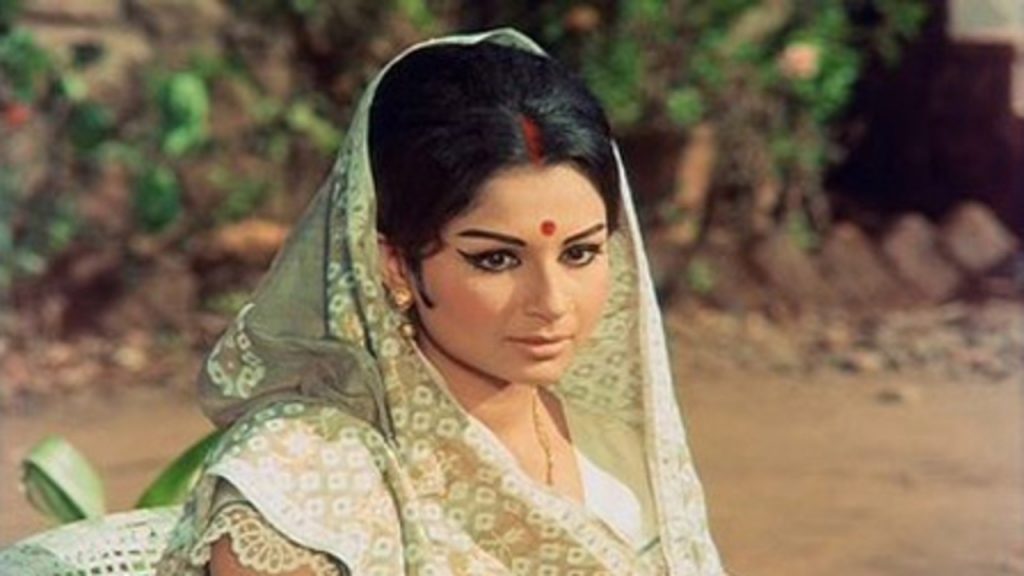

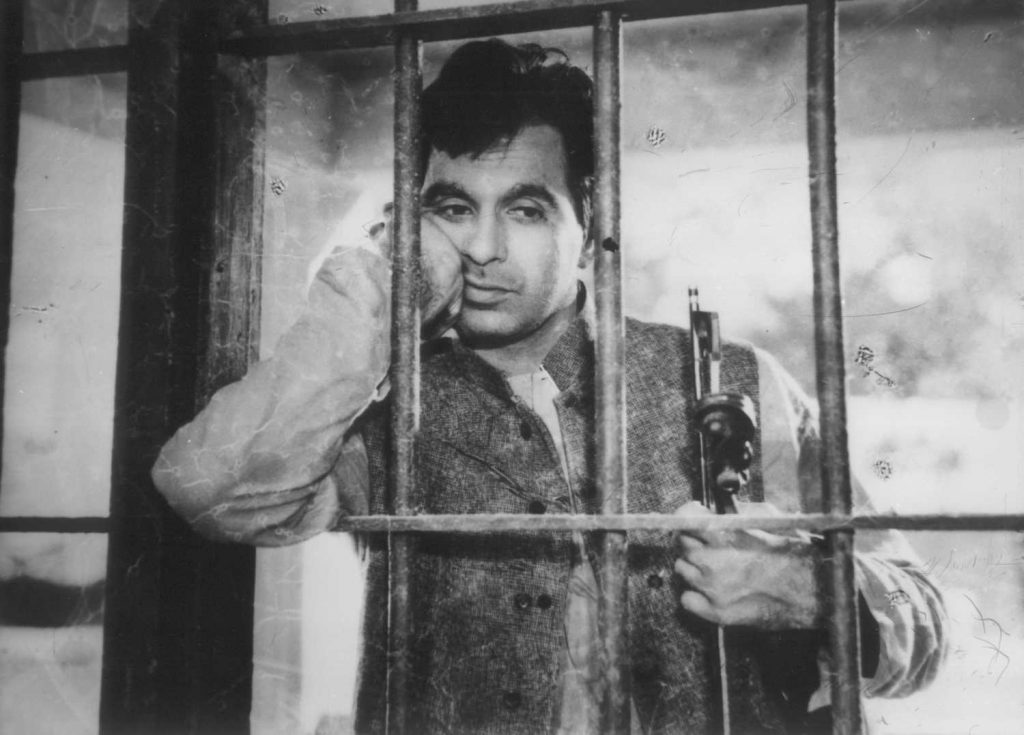
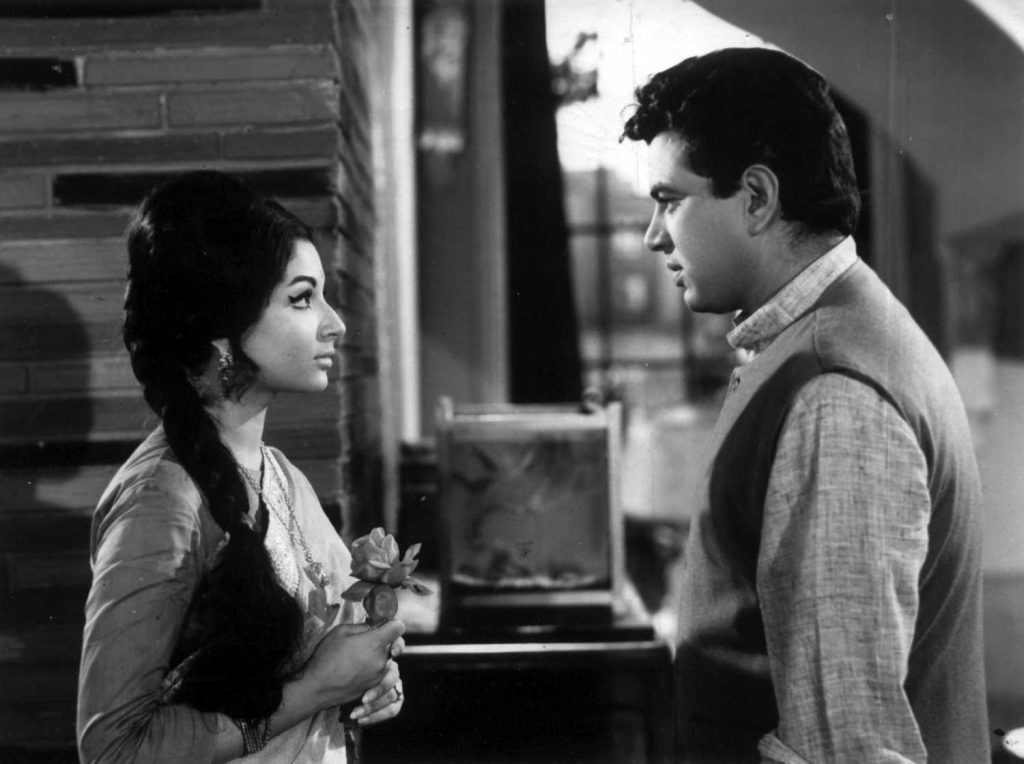
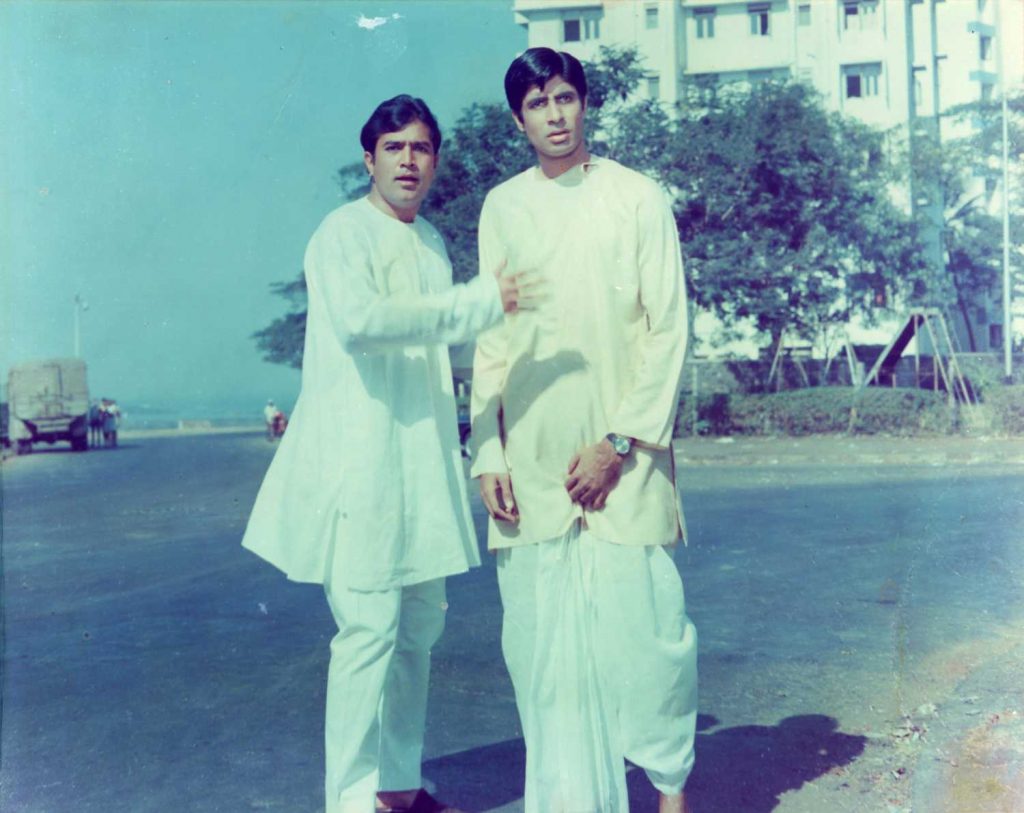
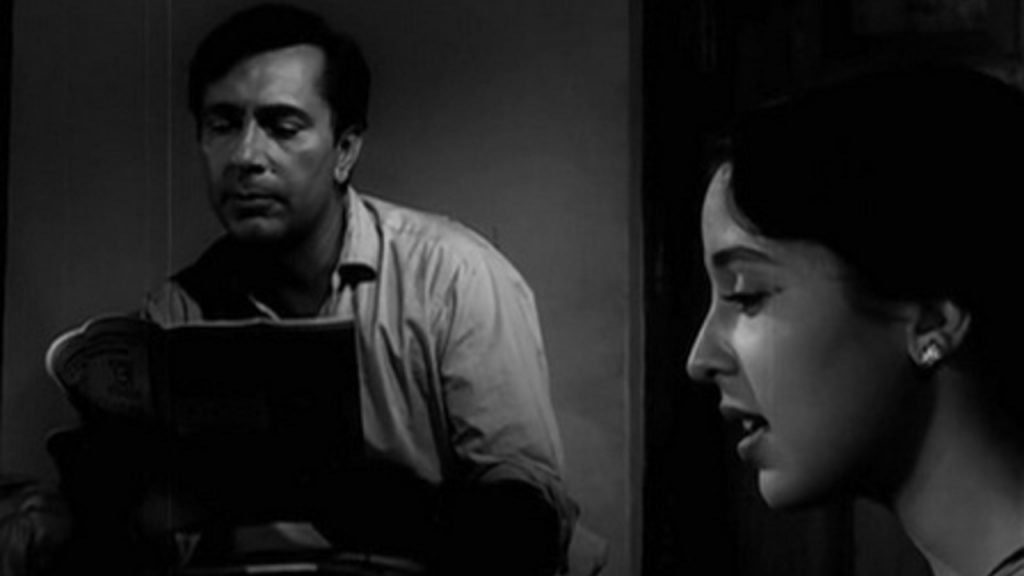
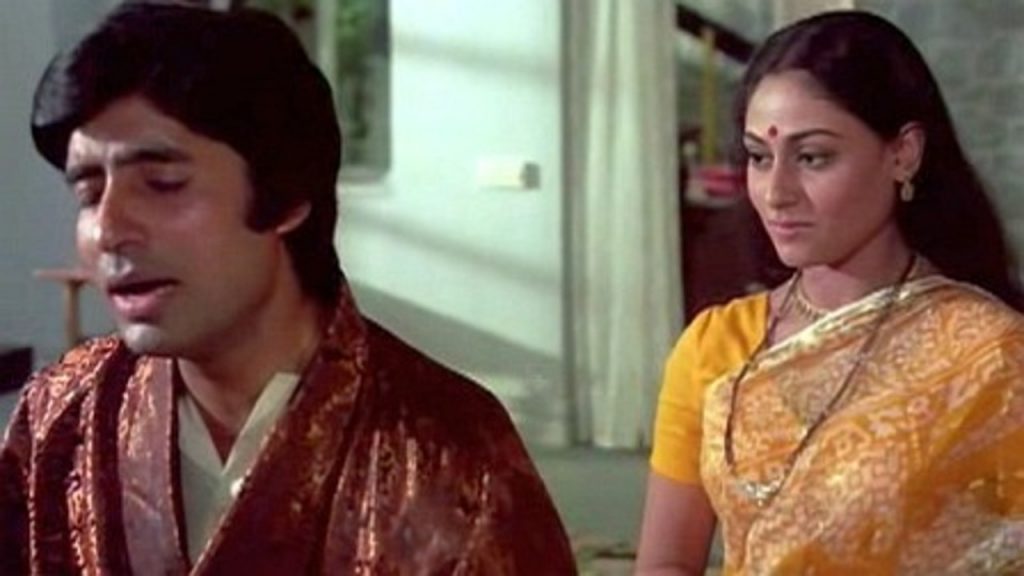
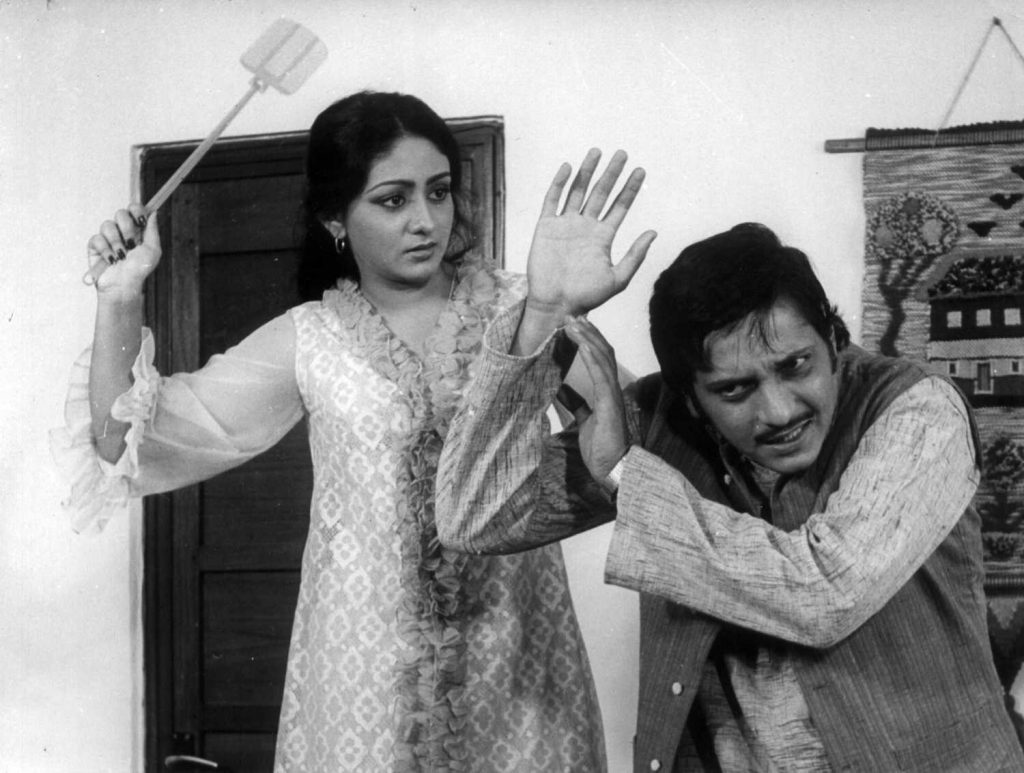
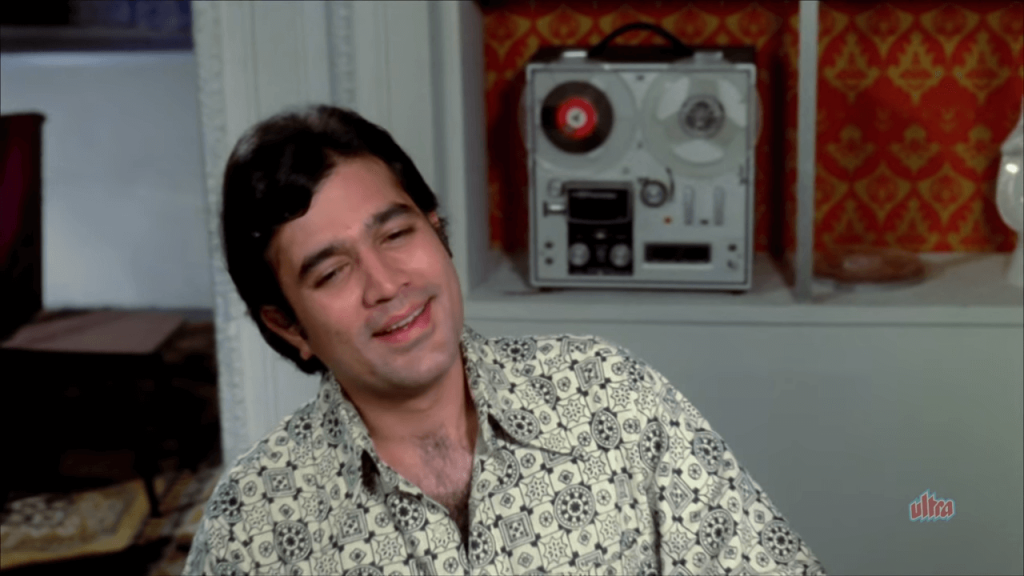
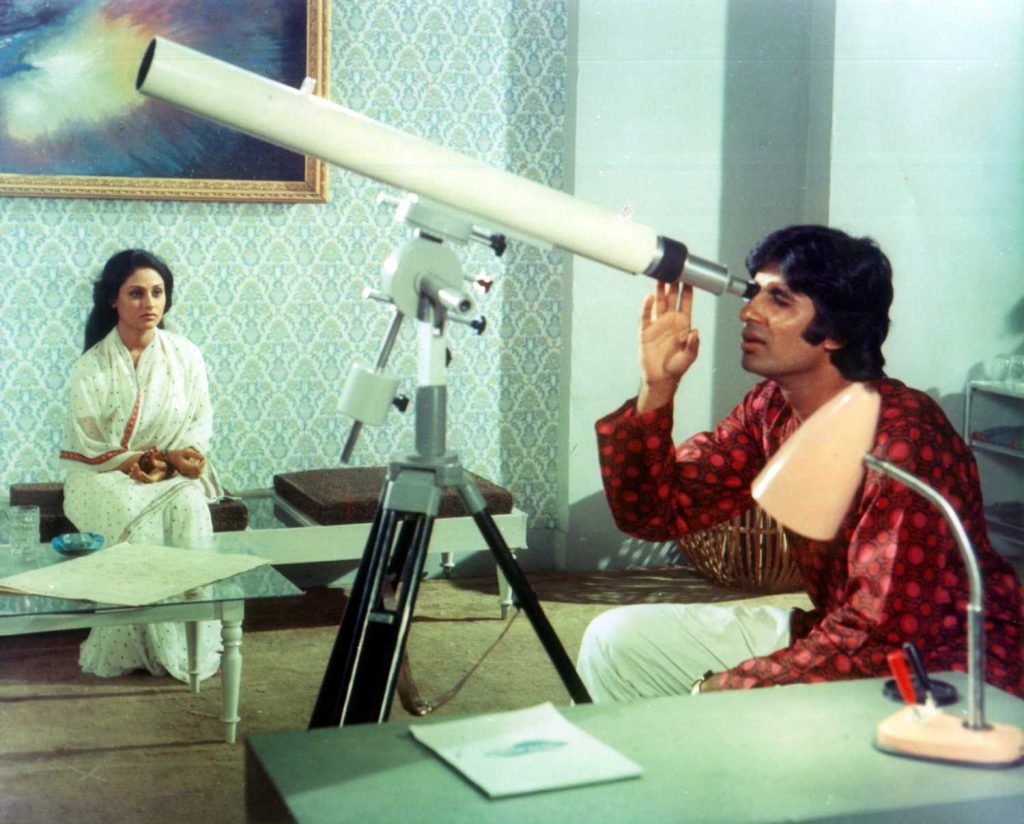
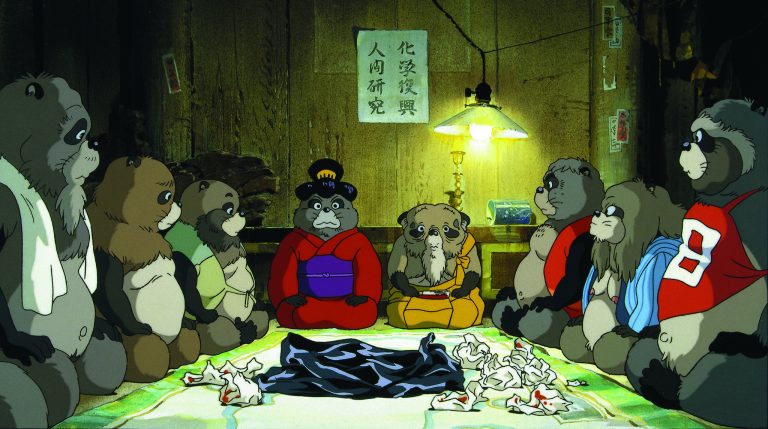

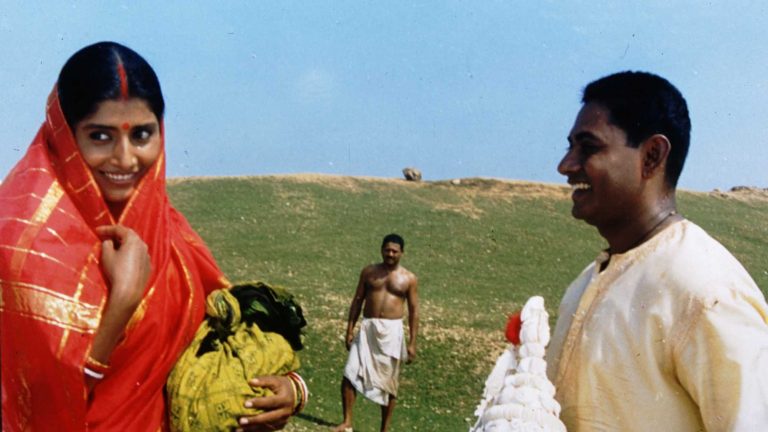
![Revisiting 27 Down [1974] On MUBI: Some Journeys Linger On In Our Minds](https://79468c92.delivery.rocketcdn.me/wp-content/uploads/2020/10/27-Down-768x403.jpg)
